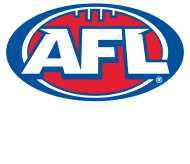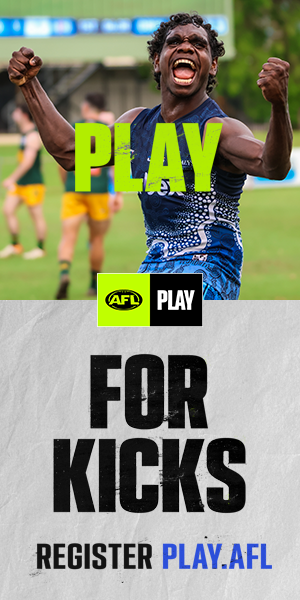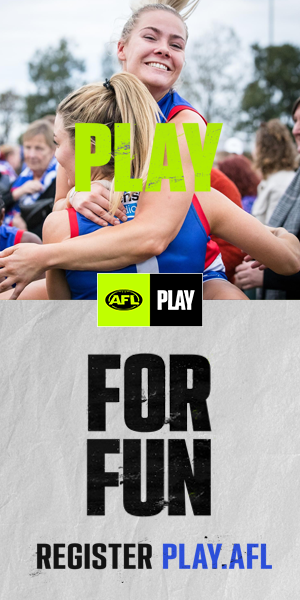Australian Football ran into a problem in Brisbane in the late 1960s. Having fought so hard to establish a strong place in the local sporting scene and the cross-code battle for talent, it suddenly found itself besieged by rugby league and all because of a rule change.
When league officials introduced a four-tackle rule in 1966 to replace the old unlimited tackle rule it made the two-point field goal a game-breaker. It put a big ‘wanted’ sign on Australian football players who were adept at what, at the time, was common practice in the now national game. The drop kick.
There was no better example than Queensland Football Hall of Famer Barry Spring, who kicked 585 goals in 168 games for Mayne through the 1960s and was of the great Queensland players of his era until he was lured to rugby league in 1969 to play a key role in a Northern Suburbs’ Brisbane rugby league premiership win.
Noted sportswriter and ex-international rugby league referee Bernie Pramberg wrote of Spring: “In an early premiership game, Barry landed five field goals (10 points) against Valleys and he was on his way. Spring’s debut season in rugby league was remarkable in that he was the only Norths player who appeared in every first grade game, culminating in the grand final when the Devils triumphed 14-2 over Valleys in front of 35,000 fans at Lang Park.”
League aficionados tell how Spring’s effectiveness with the drop kick was pivotal in the game’s decision to reduce the value of the field goal from two points to one in 1971.
But by then Australian football had already launched a rearguard action at schoolboy level to keep young players in the game. Leading the way was Ron Sands, a pioneering administrator in schoolboys football and later a key building block in the establishment and early growth of the Kenmore Bears as one of the premier junior clubs in Brisbane.
A Queenslander born-and-bred, he’d played the game at Yeronga Primary School but by year 10 was working in his father’s carpentry business. No time for football. He later became a manual arts teacher based on the Darling Downs before returning to Brisbane to teach at Kedron High School. It was there that he joined a small group of teachers keen to promote Australian football in Brisbane schools and began a hugely influential time in the game.
Importantly, at the time, the Queensland State Schoolboys side was for Under-15 players. Year 10 students. Anyone older was a ‘free hit’ for rugby league. So Sands, secretary of his small group of loyal teachers, made a critical decision in 1970. He created an Open age team for schoolboy representative honours.
It is a story told beautifully by Rick Boyce, a long-time colleague in the State Schoolboys league, who coached his first Queensland Schoolboys side at the 1967 All-Australian Schoolboys Championships in Hobart.
As Boyce wrote, in 1970, with the help of some Sandgate officials, Sands organised trials for the selection of what he called the South East Queensland open age schoolboys touring side.
“He hired an old sleeping carriage as the boys’ accommodation, when necessary, from Queensland Rail when billeting was not available. This carriage was hooked on the ‘milk’ trains that ran from Brisbane to Cairns. At each centre where a game was planned it was shunted off onto a siding for the nights and days in that centre.
“In 1971, the trials for this team became the South East Queensland Open Age Carnival, played at Mt Gravatt on the Sunday of the Queen’s Birthday weekend. By 1974, teams from all over Queensland were competing.”
Boyce, by then President of the Secondary Schools League, turned the carnival into the 1975 State Championships, played in the May school holidays. But by 1976, the open age tour of coastal Queensland had outlived its usefulness as teams from all over the state were competing in the State Championships.
It was Sands who came to the rescue again. Still a full-time classroom teacher and secretary of the Schoolboys League, he found an article in a Victorian newspaper on Australian Football in New Zealand, and with the help of the Australian National Football Council he made contact with New Zealand officials. So an annual Queensland Schoolboys tour to NZ, a football trip with an education component, was born as a Sands brainchild and became a driving passion for Boyce.
“We were not sure what to expect so we included a bus tour of New Zealand as part of the experience. Billeting occurred in the three centres in which games were played. On the tour we stayed in motor camps in cabins. The tour took two weeks. After the first game in Christchurch we toured the South Island, visiting Queenstown and the West Coast glaciers before taking the ferry from Picton to Wellington for our second game. Later we visited Taupo, Rotorua, Waitomo Caves and the Bay of Islands before two more games in Auckland,” recounts Boyce, who nominated Sands for Hall of Fame inclusion.
Apart from the football, there were many highlights. Like the first viewing of snow fall. The bus was stopped, a snowman was built, and teachers were targeted in a snowball fight. A walk on the Fox Glacier and a boat cruise in the Bay of Islands.
“Our only glitch was in Greymouth. Four players broke curfew and walked into town to be found by the local police after midnight outside a girl’s hostel. Imagine my dismay as leader of the party to be woken at 1am by a 6ft10in policeman in a foreign country. The boys were suspended for the next match and given duties to help the team and officials in Wellington,” recalls the tour boss.
It was the first of three NZ tours and a critical point in the journey of a schoolboys league that had only been formed late in 1959 and went on to play a prominent role across the Queensland schools sporting scene in the days where each code did its own thing. While such a practice has been replaced by an all-code central body, the Sands vision and commitment was pivotal to establishing a system that over the years has produced countless top-level players, including Queensland legend Michael Voss.
Four Queenslanders have won the J.L.Williams Medal, awarded to the best player at the Australian Schoolboys carnival and named in honour of one of the carnival organisers. They were Queensland Football Hall of Famers Robert Shepherd, Gavin Crosisca and Trevor Spencer, and, Travis Beynon, formerly Travis Martin-Beynon, drafted by North Melbourne in 1988 and traded to Brisbane in 1990 without playing at AFL level.
Sands’ contribution at Kenmore was similarly huge – so large that the Bears’ clubhouse, established at Akuna Street, Kenmore, after the club had originally been formed in 1967 at Dumbarton Drive, is named in his honour.
He began his association with Kenmore as the manager of the Under-7 (3) team in 1976 coached by Boyce. The pair made a formidable combination over many years, at times switching roles to allow Sands to coach his son’s team, before the introduction of Auskick presented new challenges and opportunities.
Each year, too, Sands would put his trade skill to use to create trophies for every new player and would engrave them all. He would often umpire games when no umpire was available and created a surveying instrument used to re-orientate and enlarge the playing oval.
Having died on 13 February 1996, leaving behind wife Pam and children Tracey, Vicki and Andrew, he was a Life Member of the Queensland State Secondary Schools Australian Football League and the Kenmore Junior Australian Football Club, which has produced 12 AFL players, including existing Queensland Football Hall of Famers Mal Michael, Max Hudghton and Craig Potter, and 2023 inductee Courtenay Dempsey. Other Kenmore juniors to play at AFL level have been Simon Hose, Peter Yagmoor, Jordon Bourke, Jono Freeman, Rex Liddy, Connor Ballenden, Simon Luhrs and Jackson Allen. Plus Queensland cricket star Chris Hartley, Australian rugby representative James Horwell and 2016 Olympic track runner Caitlin Sargent-Jones.
Much of the research for this story came from ‘Flying for the Footy’, a history of the Queensland State Secondary Schools Australian Football League until 2000 written by Rick Boyce. A copy on USB is available from Rick. Email: [email protected].



























































